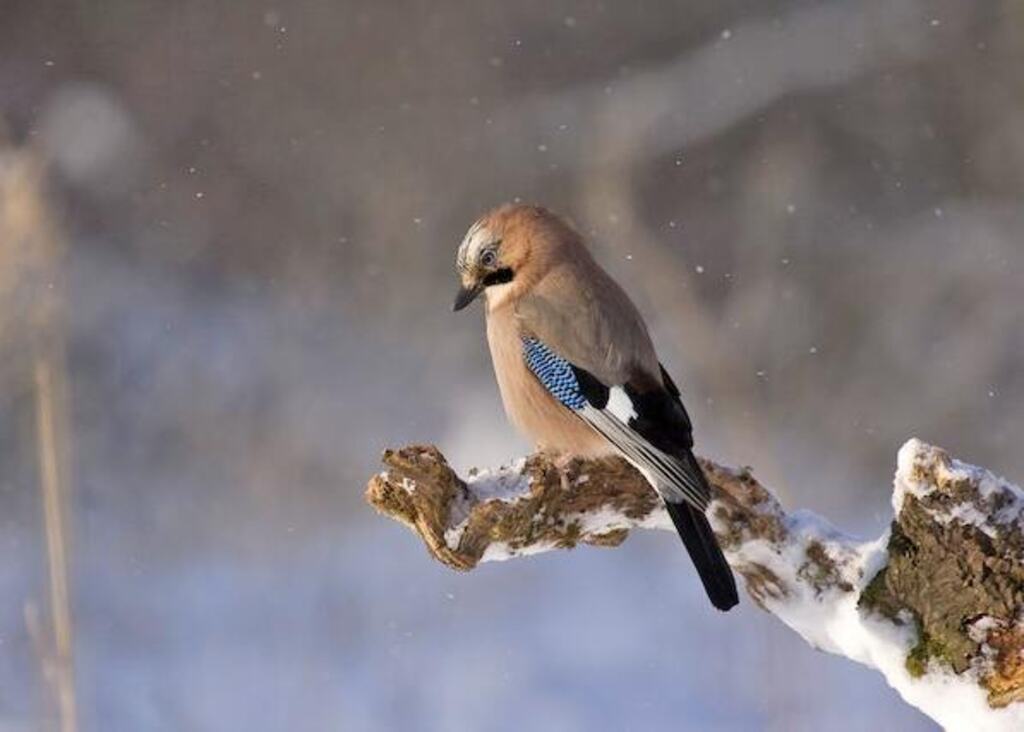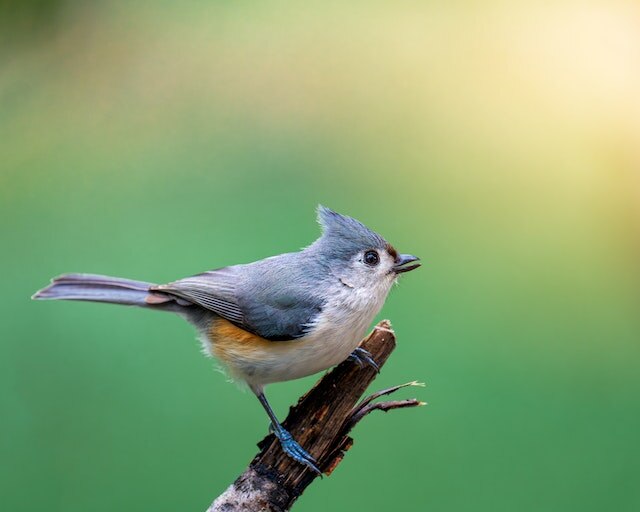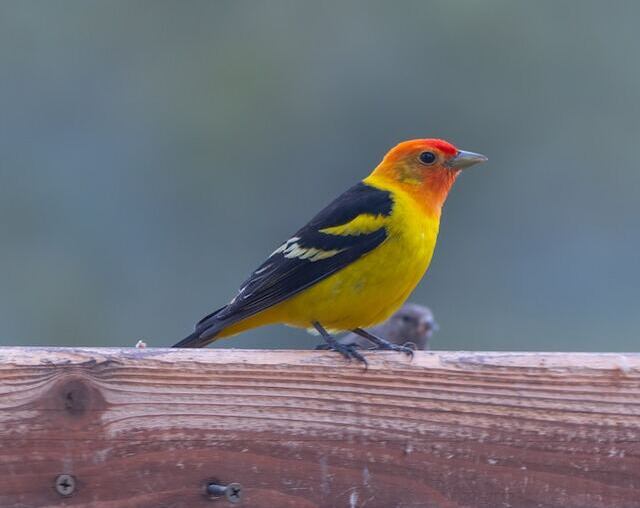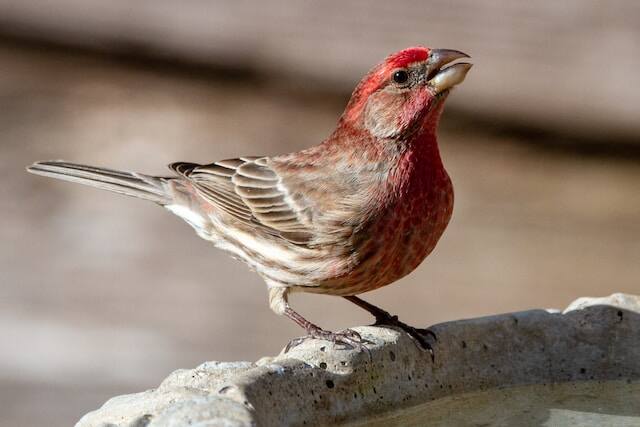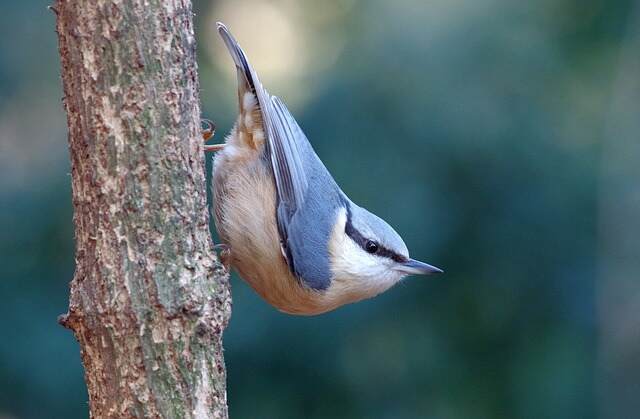It’s a common question, are birds cold blooded? The short answer is no. Birds are warm blooded, meaning they can regulate their body temperature regardless of the environment. This ability helps them survive in extreme climates, from freezing mountains to scorching deserts. In this article, you’ll learn how birds manage their body heat, what makes them different from cold blooded animals, and why it’s crucial to their survival.
Table of Contents
- 1 Key Takeaways:
- 2 Are Birds Cold Blooded?
- 3 Avian Metabolism and Temperature Control
- 4 Bird Temperature: How They Stay Warm
- 5 How Thermoregulation Helps Birds Survive
- 6 How Bird Biology Affects Thermoregulation
- 7 Common Myths About Birds & Cold Weather
- 8 Conclusion
- 9 FAQs: Are Birds Cold Blooded?
- 9.1 Are birds cold-blooded?
- 9.2 How do birds regulate their body temperature?
- 9.3 What is the body temperature of birds?
- 9.4 How does avian thermoregulation contribute to their survival?
- 9.5 What factors affect avian thermoregulation?
- 9.6 Can birds survive in cold weather?
- 9.7 What scientific studies have been conducted on avian thermoregulation?
- 9.8 In conclusion, are birds cold-blooded?
- 10 Author
Key Takeaways:
✅ Birds are warm blooded, not cold blooded
✅ They regulate temperature through metabolism and behavior
✅ Feathers and shivering help birds retain body heat
✅ Avian thermoregulation shows the complexity of bird biology
Are Birds Cold Blooded?
No, birds are not cold-blooded animals. They are warm-blooded, which means that they are able to regulate their body temperature internally, regardless of the external temperature.
Birds have a high metabolic rate, which allows them to generate heat and maintain a constant body temperature. This is important for birds because they need to be able to fly and move quickly, which requires a lot of energy.
Additionally, birds have feathers, which provide insulation and help to keep them warm in cold weather. Overall, birds are warm-blooded animals that are well-adapted to living in a wide range of environments.
Avian Metabolism and Temperature Control
When it comes to understanding whether birds are cold-blooded or not, it is essential to explore how they regulate their body temperature. Birds, like mammals, are endothermic animals, meaning they can generate their own body heat. However, there are a few differences in how they regulate their body temperature, which sets them apart from mammals.
Avian Thermoregulation
Avian thermoregulation is a complex process that involves a combination of behavioral and physiological mechanisms. Birds have higher metabolic rates compared to most mammals, which allows them to generate more heat. They also have a highly efficient respiratory system that helps to maintain a constant supply of oxygen to their tissues.
Birds also have a unique adaptation called torpor, which allows them to regulate their body temperature during periods of environmental stress, such as cold weather or food scarcity. During torpor, birds can significantly reduce their metabolic rate, allowing them to conserve energy and reduce heat loss.
Bird Metabolism
Birds have a high metabolic rate, which is necessary for their active lifestyle and ability to fly. A bird’s metabolism is about 10 times higher than that of a similarly sized reptile. The high metabolic rate is due to the efficiency of the bird’s digestive system, rapid heart rate, and respiratory rate.
Birds also have a unique digestive system that allows them to extract more energy from their food. They have a crop that stores food, a stomach with two chambers, and a highly efficient small intestine that absorbs nutrients. The liver is also an essential organ in a bird’s digestive system, as it helps to regulate blood sugar levels and produces energy.
Thermal Regulation in Birds
Unlike cold-blooded animals, such as reptiles and amphibians, birds are not entirely dependent on external sources of heat to regulate their body temperature. Birds can maintain a constant body temperature, even in extreme environments. They do this by increasing or decreasing heat production, changing the configuration of their feathers, and altering their behavior.
Birds are also able to increase their metabolic rate by shivering, which generates heat, and by increasing their heart and respiratory rate. When it is hot, birds can pant to lose heat and increase blood flow to their extremities, which helps to regulate their body temperature.
Overall, birds are incredible animals that have evolved a unique set of adaptations to regulate their body temperature. The combination of their high metabolic rate, efficient respiratory and digestive systems, and behavioral and physiological mechanisms makes them some of the most adaptable animals on the planet.
Bird Temperature: How They Stay Warm
One of the most important factors in avian thermoregulation is the maintenance of a constant body temperature. Unlike cold-blooded animals whose body temperature is determined by their environment, birds are endothermic, which means that they generate their own body heat.
The average body temperature of a bird is around 104 degrees Fahrenheit, which is higher than that of mammals. This high body temperature is maintained through a complex set of mechanisms that help birds regulate their body temperature.
| Thermoregulation Mechanisms | Description |
|---|---|
| Fluffing feathers | Birds fluff their feathers to trap warm air close to their body, reducing heat loss. |
| Shivering | Similar to mammals, birds can shiver to generate heat to warm up their body. |
| Panting | In hot weather, birds pant to evaporate water from their respiratory system, which cools their body. |
| Perching on one leg | Birds have a special tendon that allows them to “lock” their leg in place, reducing the amount of heat lost through their feet. |
Despite their endothermic nature, some bird species, such as hummingbirds, are able to enter a state of torpor to conserve energy and reduce their metabolic rate when they are not actively foraging for food.
Overall, the complex mechanisms that birds use to regulate their body temperature have contributed to their success and survival in a wide range of environments. Understanding avian thermoregulation is an important aspect of avian biology and provides insight into the remarkable adaptations of birds.
How Thermoregulation Helps Birds Survive
Avian thermoregulation has been a crucial factor in the success of birds as a class of animals. The ability to maintain a relatively constant body temperature has allowed them to adapt and thrive in a wide range of environments and conditions.
From the frigid Arctic tundra to the sweltering tropics, birds have developed a remarkable capacity to regulate their body temperature through a variety of mechanisms. One of the most important of these mechanisms is the ability to produce and retain heat through metabolic processes.
Birds have a high metabolic rate, which allows them to generate heat internally and maintain a body temperature that is generally higher than the surrounding environment. This gives them a significant advantage in colder climates, where they can maintain warmth and avoid the risk of hypothermia.
In addition to metabolic thermogenesis, birds also employ a range of behavioral and physical adaptations to regulate their body temperature. For example, birds may adjust their posture or position themselves in relation to the sun to increase or decrease exposure to heat. They may also use their feathers to trap air and increase insulation, or engage in group roosting behaviors to share warmth.
Overall, the evolutionary advantage of avian thermoregulation cannot be overstated. It has allowed birds to exploit a diverse range of ecological niches and adapt to changing environments over time. The complexity and sophistication of avian biology is a testament to the remarkable adaptability of these creatures and the intricacies of the natural world.
How Bird Biology Affects Thermoregulation
Avian thermoregulation is a complex process that involves various factors, each contributing to the bird’s ability to maintain its body temperature. These factors go beyond the metabolic and physiological processes discussed earlier and include other aspects of avian biology.
One of the most important factors is feathers. Feathers serve as an insulating layer, trapping air close to the bird’s body and reducing heat loss. The thickness and density of feathers vary across bird species, with some having a thicker layer of feathers than others. This variation in feather density allows birds to adapt to different temperature environments, from cold mountain peaks to hot deserts.
The size of a bird also affects its thermoregulation. Smaller birds lose heat more quickly than larger birds due to their higher surface area relative to their volume. This means that smaller birds need a higher metabolic rate and more efficient insulation to maintain their body temperature.
Behavior is another factor that can influence avian thermoregulation. Some birds adjust their posture to optimize heat retention or dissipation, such as fluffing up their feathers to trap air and increase insulation or exposing their wings to the sun to absorb heat. Other birds may migrate to warmer or cooler climates, depending on the season, to maintain optimal body temperature.
Finally, there are genetic and evolutionary factors that contribute to avian thermoregulation. Some bird species have evolved specific adaptations to their environment that allow them to maintain their body temperature more efficiently. For example, certain species of penguins have a countercurrent heat exchange system in their legs that prevents heat loss to cold water when they are swimming.
| Bird Biology Factor | Impact on Thermoregulation |
|---|---|
| Feathers | Insulate and reduce heat loss |
| Size | Smaller birds lose heat more quickly and need higher metabolic rates and more insulation to maintain body temperature |
| Behavior | Adjust posture and migrate to maintain body temperature |
| Genetics and evolution | Specific adaptations to optimize thermoregulation |
Understanding the complexity of avian biology is crucial for appreciating the remarkable ability of birds to regulate their body temperature. By taking into account all these factors and how they interact, scientists can gain a better understanding of avian thermoregulation and its significance in the broader context of bird physiology and avian biology.
Common Myths About Birds & Cold Weather
There is a common misconception that birds are unable to withstand cold weather. However, this couldn’t be further from the truth. In fact, birds have remarkable adaptations that enable them to survive in even the coldest of climates.
One of the main ways that birds are able to regulate their body temperature in cold weather is by fluffing up their feathers. This creates insulation that helps to trap heat close to their body, keeping them warm. Some birds also have a special type of feather called down feathers, which are even better at trapping heat.
Another adaptation that birds have for surviving in cold weather is their ability to shiver. When birds shiver, their muscles generate heat, which they can use to warm themselves up. Additionally, some birds have a higher metabolic rate in the winter, which means they can produce more heat to keep warm.
It’s also important to note that not all birds have the same tolerance for cold weather. Birds that live in colder climates tend to have thicker feathers and larger bodies, which helps them to conserve heat. Conversely, birds that live in warmer climates have thinner feathers and smaller bodies, which allows them to dissipate heat more easily.
Overall, it’s clear that birds are not cold blooded creatures that are unable to cope with cold weather. Through their remarkable adaptations and abilities, they are able to thrive in even the harshest of environments.
Scientists have conducted numerous studies to understand how birds regulate their body temperature in both hot and cold environments. Research has shown that birds can conserve heat by reducing blood flow to their extremities, such as their legs and feet. This process, known as countercurrent heat exchange, helps birds retain warmth in their core during cold conditions.
Studies published in the Journal of Experimental Biology also confirm that birds use their feathers as insulation. By fluffing up their feathers, they trap layers of air close to their skin, creating a barrier that helps retain body heat. Some birds can even adjust their feather positions to either conserve or release heat depending on the weather.
Other research focused on birds in cold climates has found that many species develop physical adaptations, such as thicker plumage and larger body sizes, to help minimize heat loss. Birds may also engage in behavioral strategies like huddling in groups to conserve warmth during freezing temperatures.
Overall, these studies and many more demonstrate the incredible complexity and adaptability of avian thermoregulation. By understanding the unique physiology and biology of birds, scientists continue to uncover fascinating insights into the ways in which animals are able to survive and thrive in a wide range of environments.
Conclusion
In conclusion, birds are not cold-blooded; they are warm-blooded or endothermic animals that regulate their body temperature through various mechanisms. Avian thermoregulation is a complex process that involves metabolic processes, insulation, behavior, and other factors.
Understanding avian biology and physiology is crucial to appreciating the remarkable adaptations that birds have developed to survive in various environments.
The ability of birds to regulate their body temperature has contributed to their success and survival in diverse habitats, from the Arctic tundra to tropical rainforests.
They have evolved various strategies to withstand cold weather, dispelling the common misconception that they cannot survive in such conditions.
Scientific studies and research have shed light on avian thermoregulation, revealing the complexity and sophistication of bird physiology. Such studies have also highlighted the importance of continued research and conservation efforts to protect these remarkable creatures.
Further Reading:
To learn more about avian biology and thermoregulation, check out the following resources:
- Nature: How Birds Keep Warm in Winter
- Journal of Experimental Biology: Avian Thermoregulation in the Heat: Evaporative Cooling During Locomotion in the Pigeon (Columba livia)
- The Cornell Lab of Ornithology: Bird Biology
FAQs: Are Birds Cold Blooded?
Are birds cold-blooded?
No, birds are not cold-blooded. They are warm-blooded animals, meaning they can regulate their body temperature internally.
How do birds regulate their body temperature?
Birds regulate their body temperature through a process called thermoregulation. They can increase or decrease their metabolic rate to generate heat or conserve it, and they also have the ability to fluff or flatten their feathers to adjust insulation.
What is the body temperature of birds?
The average body temperature of birds is around 104–108 degrees Fahrenheit (40–42 degrees Celsius).
How does avian thermoregulation contribute to their survival?
Avian thermoregulation is crucial for the survival of birds, as it allows them to maintain a stable body temperature regardless of external conditions. This adaptability helps them thrive in various environments and climates.
What factors affect avian thermoregulation?
Factors such as feathers, body size, behavior, and habitat all influence avian thermoregulation. Feathers provide insulation, body size affects heat retention, behavior allows birds to seek shelter or sun exposure, and different habitats may require different thermoregulatory strategies.
Can birds survive in cold weather?
Yes, birds have evolved remarkable adaptations that help them survive in cold weather. These include fluffy down feathers, increased metabolic rate, and the ability to seek shelter and conserve heat.
What scientific studies have been conducted on avian thermoregulation?
There have been numerous scientific studies on avian thermoregulation, exploring topics such as metabolic rate, feathers’ insulating properties, and the effects of environmental factors on body temperature regulation.
In conclusion, are birds cold-blooded?
No, birds are not cold-blooded. They are warm-blooded animals, capable of regulating their body temperature internally through the process of thermoregulation.

